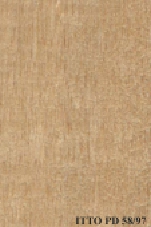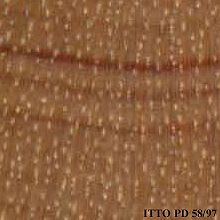
VIROLA (Virola sebifera)
Trade Name
Virola
Scientific Name
Virola sebifera Aubl.
Family
MYRISTICACEAE
Common Names
Moulomba (Guyana); Sangre; Cumala Blanca (Peru); Camaticaro (Venezuela); Palo De Sangre; Colorado; Ucuuba (Brazil); Sebo (Colombia); Nuanamo (Colombia); Birma; Shempo (Ecuador); Cumala Colorada (Peru); Cumala (Peru); Pintri (Surinam); Cajuea (Trinidad & Tobago); Otivo (Venezuela); Virola (Venezuela); Cuajo (Venezuela); Sangrino (Venezuela); Chaliviande (Ecuador); Dalli (Guyana); Banak; Bicuiba Branca (Brazil); Tapsava; Virola (Brazil); Ucuhuba (Brazil); Yayamadou (Guyana); Baboen (Surinam); Chalviande (Ecuador); Tzimbo (Ecuador); Gabón (Bolivia); Sangrino (Venezuela); Cuajo (Venezuela); Virola (Venezuela); Cumala (Peru); Banak; Veuhuba; Venhuba; Babun; Sangre De Toro (Colombia); Bagabani; Sangre; Camaticaro; Baboen (Surinam); Dalli (Guyana)
Scientific Name Synonyms
Palala sebifera (Aubl.) Kuntze; Myristica sebifera (Aubl.) Sw.; Myristica cordifolia Mart. ex A. DC.
Description Of The Tree
Botanical Description
V. sebifera is a medium sized tree, attaining heights of up to 30 m and trunk diameters of about 90 cm. It presents buttresses.
Natural Habitat
Virola sebifera is distributed in the lowlands of tropical America up to 1300 m above the sea level. It is reported in secondary forests, growing on dry areas and also close to river mouths in the Atlantic forests.
Natural Distribution
It is common in the states of Para until Sao Paulo in the cerrado forest of Brazil.
Wood Identification
Anatomic Description Of Wood
Wood diffuse porous. Vessels solitary and in short radial multiples. Tangential diameter of vessel lumina 150 to 200 micras (medium). Tyloses thin walled. Occasionally tyloses common. Vessels per mm2 10 to 20 (abundant). Simple perforation plates. Occasionally m Axial parenchyma absent or extremely rare, non visible with magnifying glass (8x). 4 to 10 rays per mm (medium). Rays commonly 2 seriate. Heterogeneous rays and/or multiseriate heterogeneous rays. Body ray cells procumbent with over 4 rows of upright and/or square marginal cells (Kribs-I). Fibers with simple to minutely bordered pits.
-
 Wood Macro Photo Tangential Plane
Wood Macro Photo Tangential Plane
-
 Wood Micro Photo Of Transversal Section
Wood Micro Photo Of Transversal Section
Availability
Cites Status
Unrestricted
General Wood Description
Odor
It has no characteristic odor or taste.
Color
The sapwood is very pale brown, the heartwood gradually changes into brown with darker stripes.
COLOR INDEX (1=Black, 7=Light yellow,white)
4
Grain
Straight grain is reported in this species.
Texture
This species is usually reported to have a medium texture.
Luster
Luster is described as moderate to high.
Natural Durability
It is easily attacked by biological agents.
Natural durability index (1= Very high durability, 7=Vey low durability)
5
Resistance To Impregnation
This species is reported to be easy to preserve.
Wood Physical Properties
Basic Density or Specific Gravity (O.D. weight/vol. green) (g/cm³)
0.51
Air-dry Density (Weight and volume at 12%MC) (g/cm³)
0.56
Total shrinkage Tangential (Saturated to 0%MC) (%)
9.2
Total shrinkage Radial (Saturated to 0%MC) (%)
4.9
Drying Defects
Ease of Drying: It is reported to have a moderate rate of drying. Drying Defects: Slight tendency to surface checking, twisting and casehardening are reported.
Recommended Dry Kiln Schedule
UK-C; US-T3-C2; JUNAC-B
Dimensional stability ratio (Total Tangential Shrinkage %/Total Radial Shrinkage %)
1.9
Wood Chemical Properties
Wood Mechanical Properties
Bending Strength (MOR),12%MC (kgf/cm²)
972
Stiffness (MOE) 12%MC (kgf/cm²)
132000
Compression parallel to fiber 12%MC (kgf/cm²)
499
Compression perpendicular to fiber 12%MC (kgf/cm²)
46
Shear strength radial 12%MC (kgf/cm²)
72
Janka hardness (side) 12%MC (kgf)
313
Janka hardness (end grain) 12%MC (kgf)
441
Workability
Sawing
This species is easy to saw.
Rotary Veneer Cutting
Lamination of this species is possible.
Sliced Veneer
Lamination of this species is possible.
Machining
Wood processing is reported to be easy.
Planing
Planing operations are rather easy.
Moulding
Molding is reported to be easy.
Boring
It is easy to bore.
Sanding
Wood of this species is easy to sand.
Finishing
This species is reported to be easy to finish.
Response To Hand Tools
This species is reported to be easy to work.
REFERENCED USES
End Uses Summary
HOUSING GENERAL, boards, panelling, fittings, shutter boards, FURNITURE AND CABINETS, PLYWOOD AND VENEER, common veneer, PACKING, OTHER AND MUSICAL INSTRUMENTS, cigar boxes
General Housing
- 10 - Silica in Timbers
Boards
- 13 - Dry kiln schedules for commercial woods. Temperate and tropical. Section III. Latin American (Mexico, Central, and South America) Woods–Conventional Temperatures
Paneling
- 18 - W3TROPICOS Missouri Botanical Garden
Fittings
- 19 - Silica in Timbers
Shutter Boards
- 20 - Prospect: The wood database
Furniture Cabinets
- 21 - Tropical timbers of the world. Part III-Southeast Asian and Oceanian Species.
Panels, Veneers
- 25 - Directory of Timber Trade Malaysia
Common Veneer
- 29 - Embassy of Ecuador in Japan
Packing
- 45 - Recopilación y Análisis de Estudios Tecnológicos de Maderas Peruanas
Cigar Box
- 68 - Contribucion al conocimiento de la resistencia mecanica de la madera de peumo
Please Provide Information To View Producer Information